SILO 4.2 (DRAFT)Year 4, Term 2: TransportationFocus: Motion Scope
and sequence: Acceleration, Exponents, Hydraulics,
Velocity
|
|
Learning
intention: Students
explore common modes of transportation to develop an
integrated understanding of forces, materials, energy and
design factors.
|
|
|
NSW Syllabus
|
Australian Curriculum
(version 9.0)
|
|
"A
student describes how contact and non-contact forces affect an
object’s motion." (ST2-9PW-ST)
|
"Students learn to describe how
forces and the properties of materials affect function in a
product or system." (AC9TDE4K02)
|
Introduction to transportation
Friction revisited
The following video (3:44) discusses some of
the factors involved in choosing tyres for Formula 1 car racing.

 |
If
increased surface area increases grip, what is the ideal
type of tyre for achieving maximum speed?
|
Newton's three laws of motion
Newton's three laws of motion are explained in the following video (3:32). These laws were first stated by Isaac Newton in 1687. The three laws may be summarised as follows:
- Every object in a state of uniform motion will remain in that state of motion unless an external force acts on it. This is also know as inertia.
- Force equals mass times acceleration (F=ma)
- For every action there is an equal and opposite reaction.
Hovercrafts
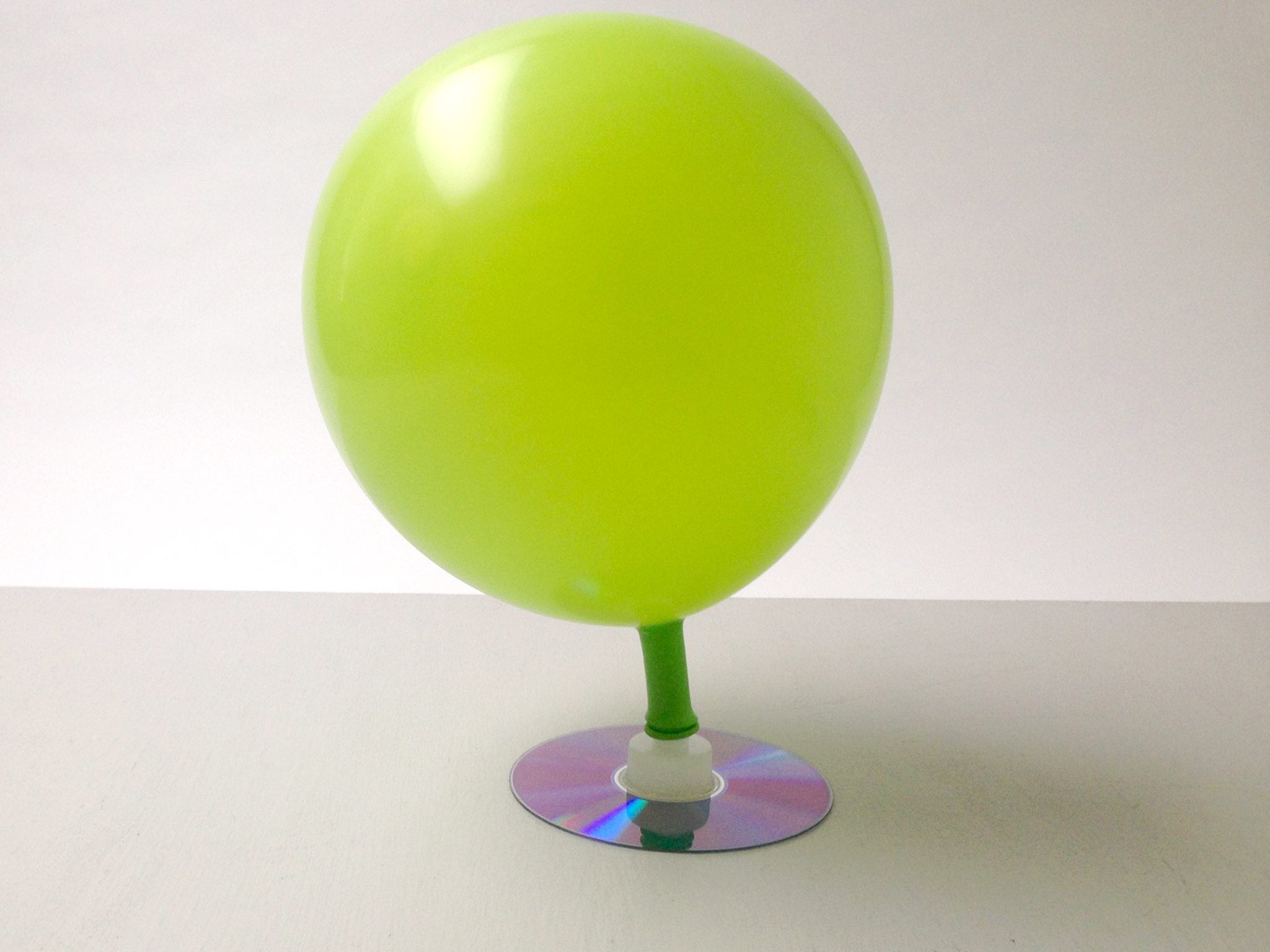
Rocket sled
This interactive rocket sled simulation allows you to change certain variables in real time and see the results.
Boats, submarines and buoyancy
This video shows a simple experiment investigating density and buoyancy (3:19).
Archimedes principle
This TED-Ed video (4:42) is an animated depiction of Archimedes
and his pioneering work with buoyancy.
Submarines
The following video (2:33) explains how submarines work using air to change their buoyancy.
Velocity and acceleration
This video (2:02) explains how acceleration is the rate at
which velocity changes over time. It also features some examples of how
to use mathematics to calculate the average acceleration.
Skateboards, roller skates and roller blades
Conservation of energy
The law of conservation of energy states that energy can
neither be created nor destroyed - only converted from one form of
energy to another. The following video (1:36) demonstrates this with
vivid examples of kinetic and potential energy.
Kinetic energy
Kinetic energy is the energy that an object has because of its motion. The formula for kinetic energy is:

Gears and ratios
Gears are a common way to utilise mechanical advantage in transportation. What are some forms of transportation that you can think of that use gears?
The following video (2:02) shows how to make simple gears using candy and paper plates.
A good way to visualise gear rations is to
image you are wrapping a tape measure around each gear. If the smaller
gear is half the size the larger gear, the tape measure could
wrap around small gear twice as many times as it does the large
gear. An example of this can be seen below: let’s say the perimeter of
the large gear is 12 cm, measured with the measuring tape. The perimeter
of the small gear is 6cm, which means that if we were to wrap the 12 cm
from the large gear around the small gear, it would fit around the
object twice.


The following video (6:26) explains how gears work and uses important terminology such as speed and torque.
Torque
Ratios
Ratios are comparisons. The following scenario involves a ratio of 1:7.
 |
There were 24,000 people at a concert. For every 7 adults there was 1 child. How many children were at the concert? |
Power to weight ratio
The ratio between power and weight is a common consideration when
dealing with the performance of an engines and motors. This principle
can even be seen in humans when competing in competitions such as
Ninja Warrior. The following video (3:13) discusses the power to
weight ratio in terms of cycling.
Cars and motorcycles
Cars and motorcycles usually have internal combustion engines or electric motors. The main difference between cars and motorcycles relates to the number of wheels. Most cars have four wheels and most motorcycles have two wheels but there are many exceptions to this. Cars will often need to have a differential so that the wheels can moves at different speeds while cornering. The section after this one explains more about differentials.
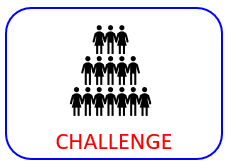 |
Project-based learning: Part 1 of 3Build your own sail car |
- The first part of this challenge is to build a chassis for your
vehicle using corflute which is corrugated plastic board.
- Bamboo skewers make excellent axles as they fit neatly inside the corflute.
- Plastic or wooden cotton spools make excellent wheels. You can stop the wheels from falling off using masking tape or Blu Tack. If the tape or Blu Tack is obstructing the motion of the wheels you can make small round washers out of cardboard with a hole punched in the centre.
- A sail can be added using thick paper on another bamboo skewer. Another cotton spool and tape and/or Blue Tack can help secure it to the chassis.
- Test the sails cars in the classroom using a large fan or take the sails cars outside to try catching the wind. The picture below doesn't show the movement but this sail car was moving quickly as the wind was very gusty.
- Remember to use the design cycle throughout this challenge. The changes which you make could also be described as modifications.
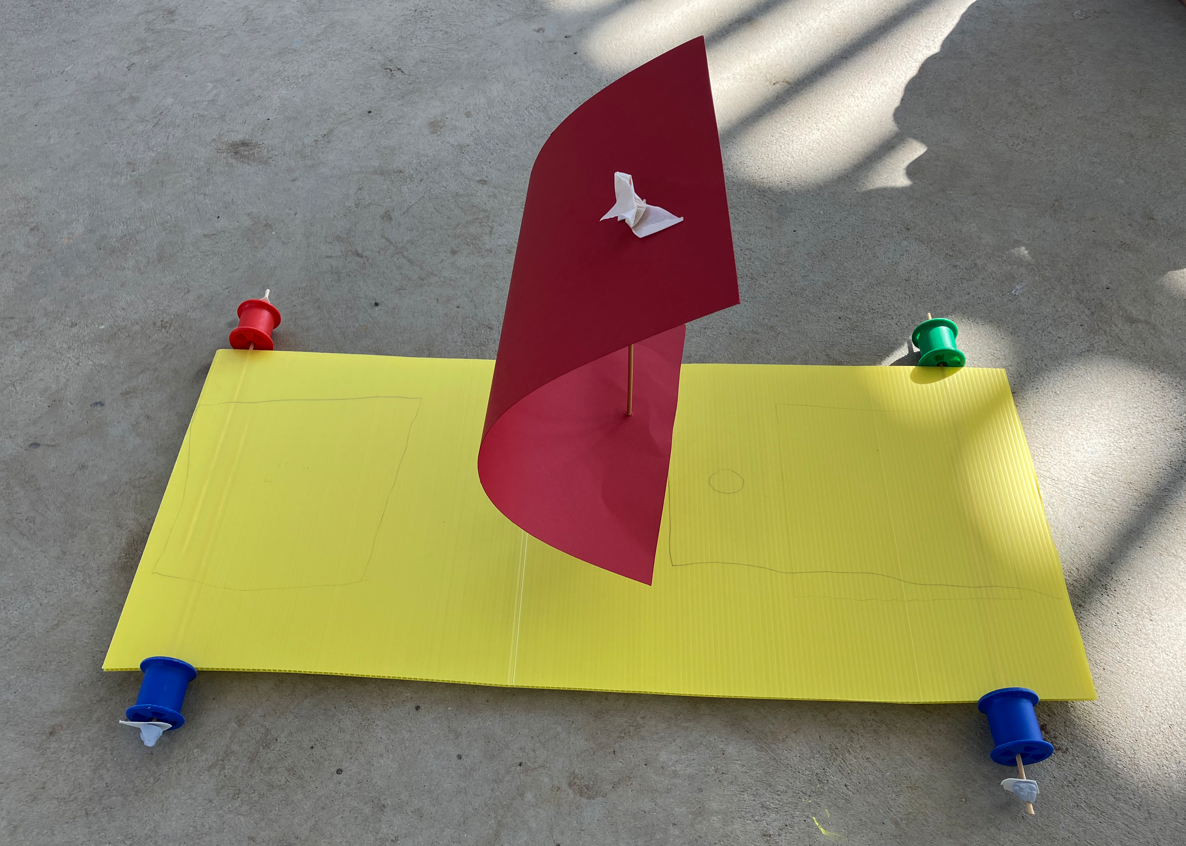
 |
Project-based learning: Part 2 of 3Convert your sail car into an electric car using electronic kits |
This challenge is an opportunity to improvise. Improvisation can occur in any situation which involves spontaneity, or creative approaches. Although the electric vehicle will need to be stable and durable, some of the early design work might involve improvisation as part of the design cycle. An example of this is devising temporary supports to hold the motor in place during initial testing.
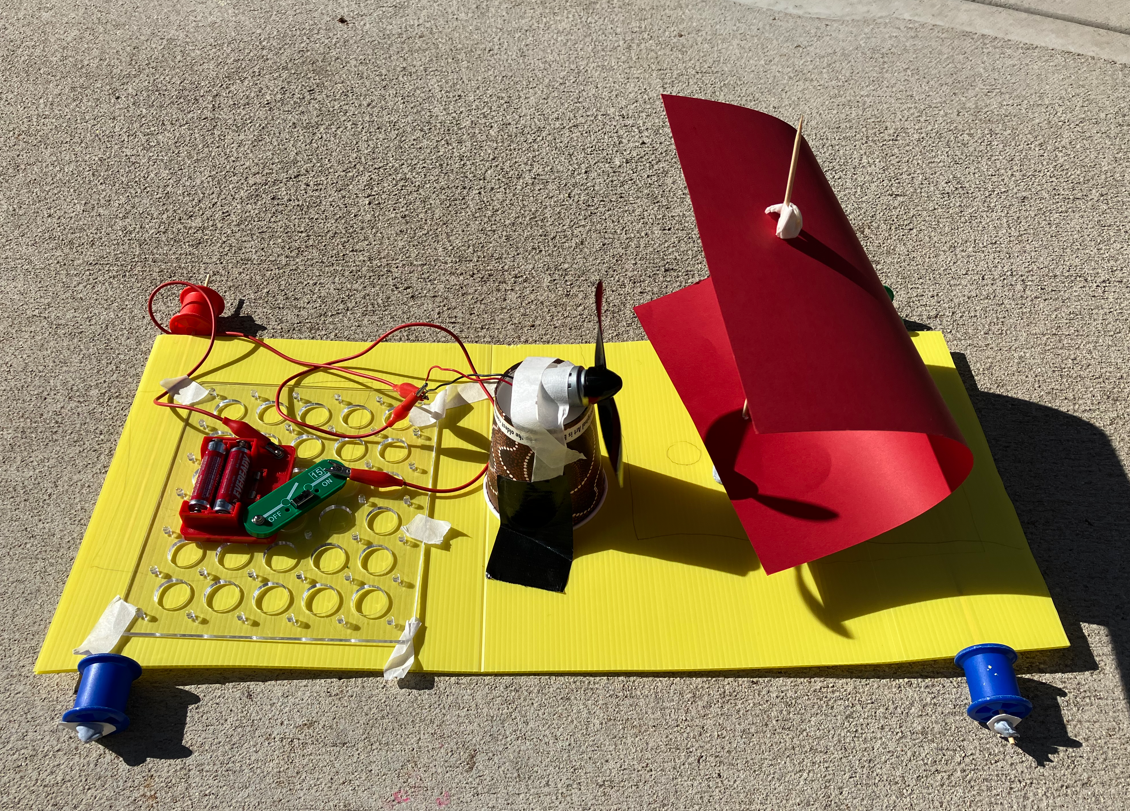
 |
Project-based learning: Part 3 of 3Convert your sail car into an electric car using electrical components |
Two motors

Six volts connected to one motor
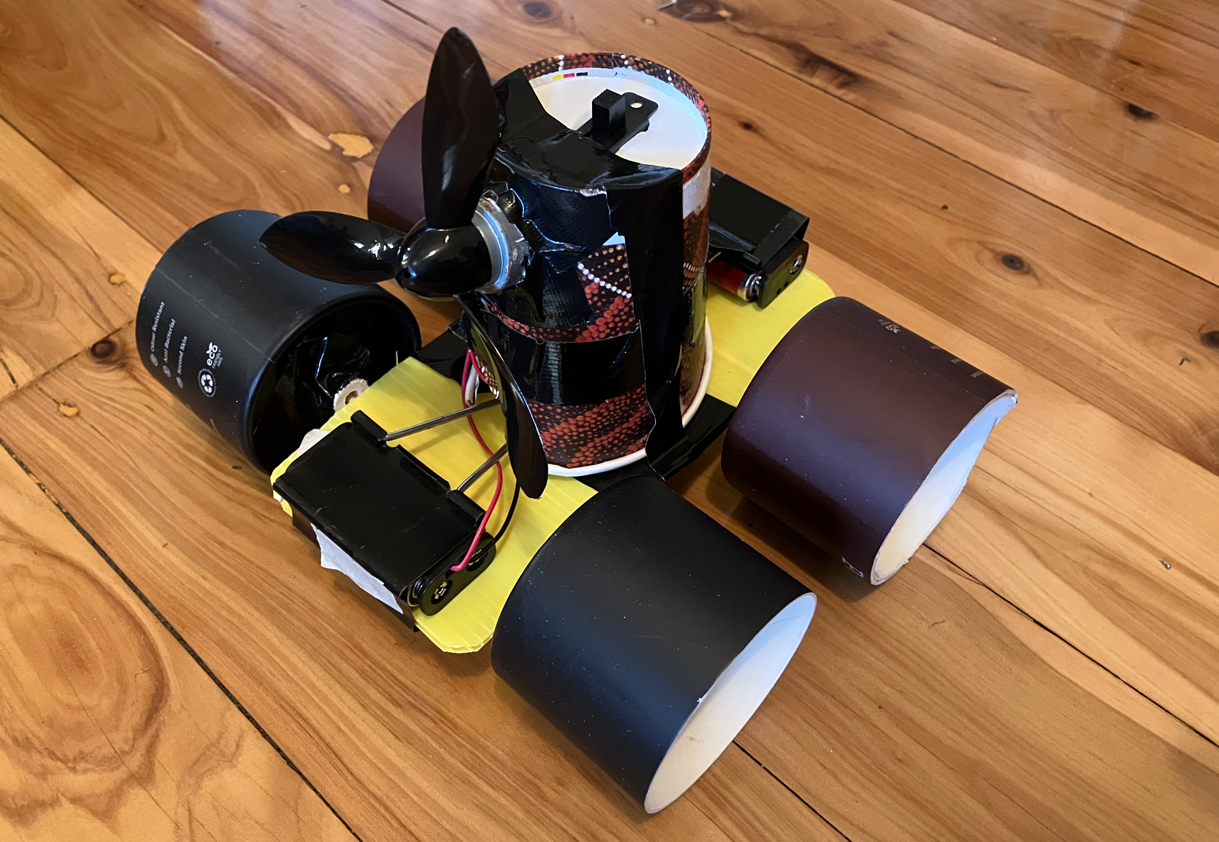
Differentials
This video (5:18) is more advanced than Year 4 children would normally encounter but the main points are that wheels turn at different speeds when cornering and that gears are one way to enable this. Students will also explore how wheels on a non-fixed axle such as on a pram or billy cart are free to turn at different rates.
Camshafts
The following video (6:03) demonstrates some cams and followers using common materials such as cardboard and pencils.
This screenshot from the same video shows some different types of cams, namely, eccentric, egg, snail, elipse and hex.

Air travel
Planes, helicopters and gliders are some of the more common types of air travel. The following video (3:00) explains why the wind blows which is an important consideration for weather patterns and air travel.
Air travel and the Earth's rotation
The following video (3:15) explains the effect of the
Earth's rotation on air travel.
Lift
Rockets
Space ships
Air pressure experiments
The following video (10:18) is about straws and it explains that suction is really a difference in pressure. It also makes the point that "Nothing sucks in science".
 |
Have you ever noticed how having only one window open while a car is moving can give you sore ears? What do you think might be happening here?The reasons for this phenomenon are explained in the following video (1:30) titled What is wind buffeting and why does it happen? |
Hydraulics
Pascal's principle states that the pressure applied to
any part of an enclosed liquid will be transmitted equally in all
directions through the liquid. The following screenshot is from a
video (3:22) about the application of Pascal's law in hydraulics. It
shows the formula for comparing both sides of a hydraulic jack.
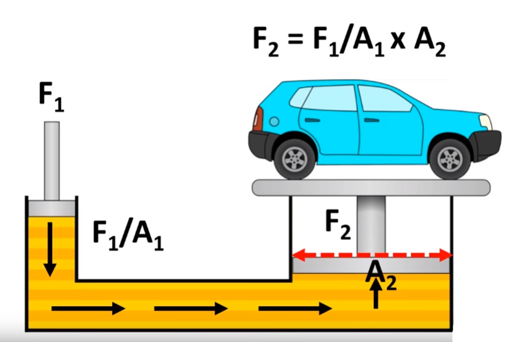
Relative motion
The following video (6:26) on relative motion is an
important introduction to the idea that everything is in constant
motion. Related terms include 'frame of reference'.
Moderated self-assessment
Discussions with students around the key components of conceptual topics and how they fit together can generate insights into student achievement.
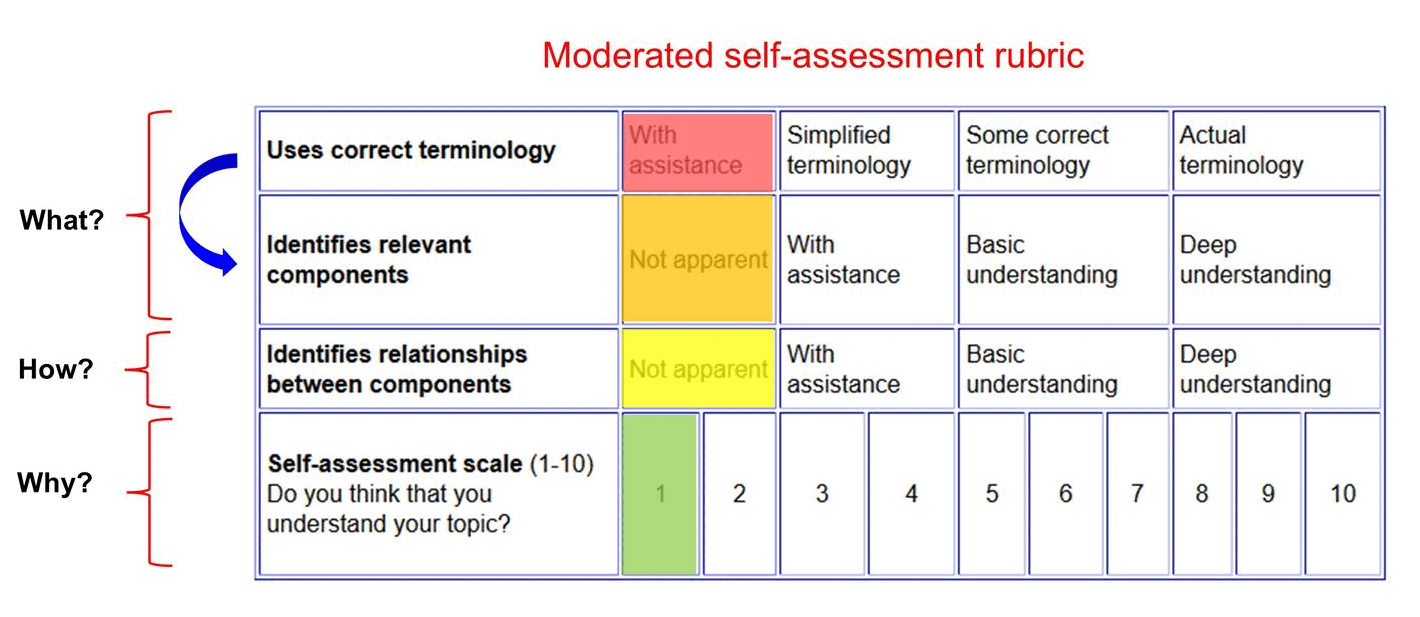

This work is licensed under a Creative Commons Attribution-NonCommercial-ShareAlike 4.0 International License.
Main menu
